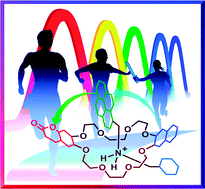Photo-responsive pseudorotaxanes and assemblies
Abstract
Chemists have achieved a predictable control over various non-covalent interactions and have used these weak interactions in their favour for developing a plethora of intricate functional structures. In this tutorial review we have summarized reports on such supramolecular structures that describe the rational approach in designing host and/or guest components, tagged with an appropriate fluorophore, for achieving the modified optical responses on formation of an assembly. This has relevance for designing new photo-responsive smart or adaptive stimuli responsive functional materials, self-healable materials, with interesting photo-physical property. These are also important in the area of supramolecular chemistry and biophysical chemistry in predicting the relative conformation in solution.


 Please wait while we load your content...
Please wait while we load your content...